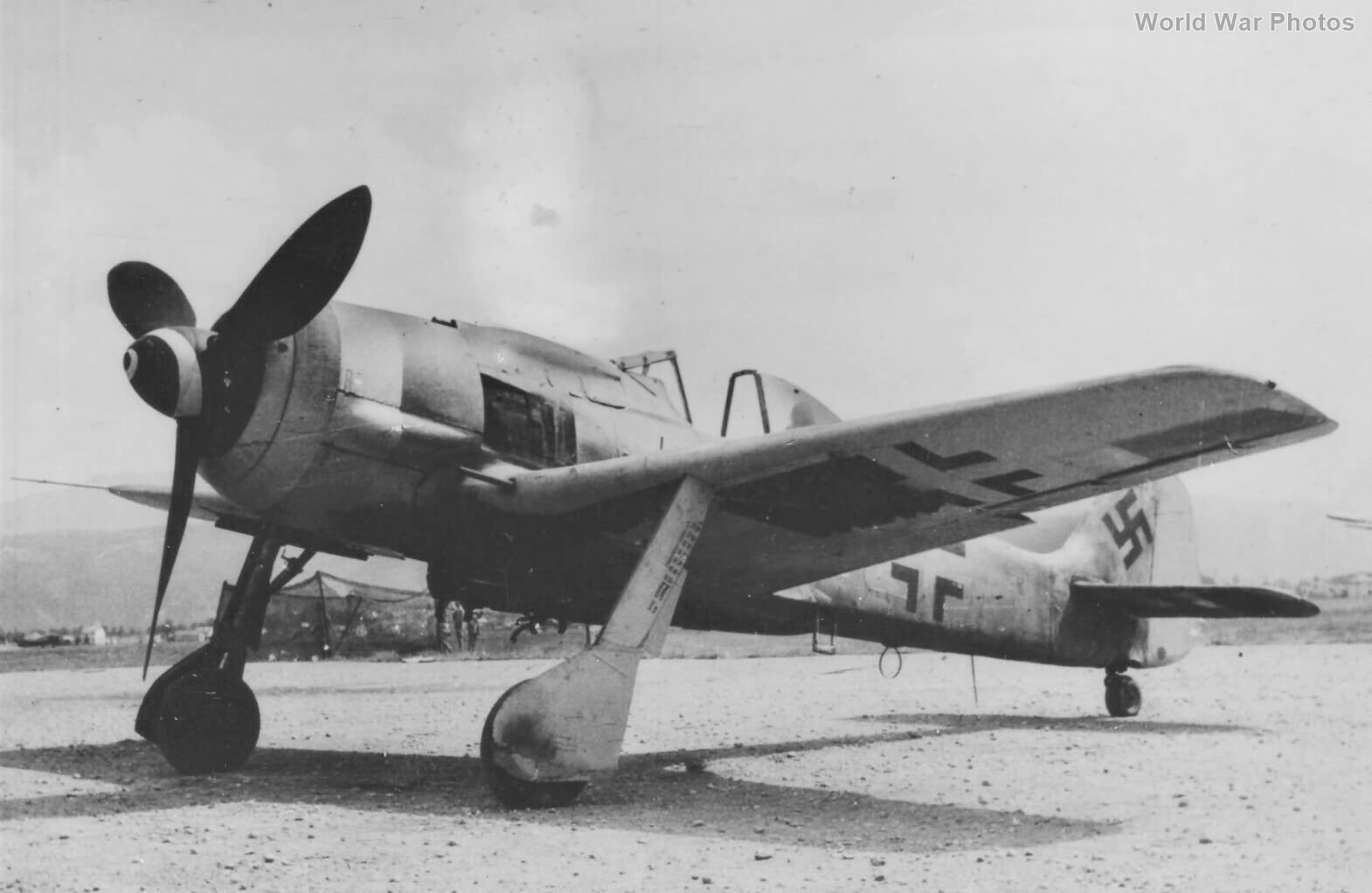The Fw 190F series continued its evolution with several planned variants, although not all were produced due to various technical and logistical issues. Here’s a brief overview of the key developments and features of these variants:
Fw 190F-4, F-5, and F-6
- Planned Developments: These were intended as follow-ons to the F-3, with expected updates in equipment and armament. However, these variants were never built, likely due to the lack of availability of the planned BMW 801F engine.
Fw 190F-8
- Basis and Production: The F-8 was essentially an improved version of the F-3, utilizing the airframe of the A-8 series. It featured an enhanced ordnance electrical system that allowed for the individual release of bombs, offering more flexibility in bombing missions. Additionally, the aircraft’s wing was reinforced, particularly around the landing gear area.
- Armament and Equipment: The F-8 replaced the two MG 17 machine guns over the engine with MG 131s, and it could carry four ETC 50 racks under the wings for additional ordnance.
- Special Roles: Some F-8 models were used for testing various torpedoes and weapons packages, including configurations with three 30 mm MK 103 cannons, although these tests did not lead to significant operational changes.
- Production: Approximately 385 units of the F-8 were produced, starting in March 1944 at Arado and Dornier.
Fw 190F-9
- Engine: This variant featured the more powerful BMW 801TS or TU engines, which were intended to provide better performance.
- Development Status: The F-9 represented an incremental improvement over the F-8.
Fw 190F-10
- Status: This variant was planned but never built.
Fw 190F-15 and F-16
- Further Developments: These variants continued to build on the F-series, with enhancements such as strengthened undercarriage and the use of more powerful engines (BMW 801TS or TU).
- Fw 190F-15: The prototype V66 (Werknummer 584002) served as the prototype, cleared for flight in December 1944. Production began in March 1945.
- Fw 190F-16: Planned for series production in April 1945 at Dornier, the F-16 was intended to include additional fuel tanks in the wings, each holding 110 liters. The prototype V67 (Werknummer 930516) was equipped with BMW 801TS or TH engines. However, this model did not enter mass production due to the war’s end and other complications.
- Communication Systems: The F-15 and F-16 variants were to replace the FuG 16 radio system with the FuG 15, which had limited functionality as it could only transmit or receive, not both, making it unsuitable for the Y-Verfahren control system that required communication with radar systems.
These developments reflect the constant evolution and adaptation of the Fw 190 series to meet the changing needs of the Luftwaffe, especially as the war progressed and the requirements for ground attack and multi-role capabilities became more pressing.
